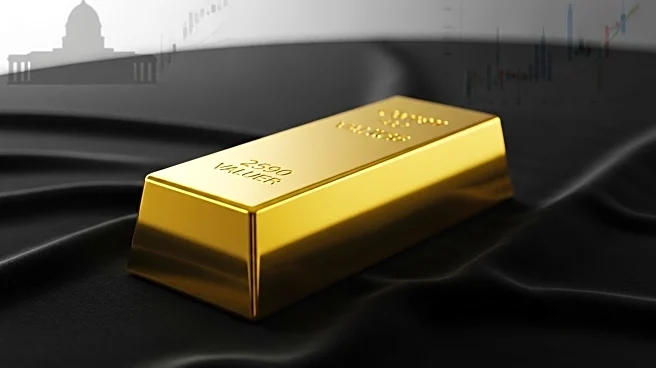What's Happening?
Gold has surpassed $4,000 an ounce, prompting investors to explore various strategies for gaining exposure to the metal. Ray Dalio has recommended allocating up to 15% of portfolios to gold, citing economic uncertainties and inflation as key drivers. Industry experts suggest several methods for investing in gold, including physical gold bars, jewelry, exchange-traded funds (ETFs), and gold mining stocks. Each option offers different benefits and risks, with ETFs providing liquidity and cost-effectiveness, while physical gold ensures true ownership. Gold mining stocks offer leveraged upside but come with company-specific risks.
Why It's Important?
Gold's rise highlights its role as a safe haven asset amid economic uncertainties, influencing investment strategies and portfolio allocations. As investors seek stability, the demand for gold may continue to grow, impacting market dynamics and prices. The various investment options for gold provide opportunities for diversification and risk management, allowing investors to tailor their exposure based on individual preferences and goals. The situation underscores the importance of understanding the benefits and risks associated with different gold investment strategies.
What's Next?
As gold prices continue to rise, investors may increasingly turn to ETFs and mining stocks for exposure, potentially driving demand and influencing market trends. The evolving market dynamics may prompt discussions on the role of gold in modern portfolios and its long-term prospects. As economic uncertainties persist, the demand for safe haven assets like gold may remain strong, influencing investment strategies and portfolio allocations. The situation may lead to increased scrutiny of gold-related investments, including ETFs and mining stocks, as investors seek optimal exposure to the metal.
Beyond the Headlines
Gold's ascent highlights broader themes of economic resilience and the search for stability amid uncertainty. The situation raises questions about the sustainability of current economic policies and the potential for alternative assets to play a larger role in financial markets. As investors navigate these challenges, discussions on the ethical and environmental implications of gold mining and production may gain prominence. The interconnectedness of global markets underscores the need for coordinated policy responses to address economic risks and promote stability.










